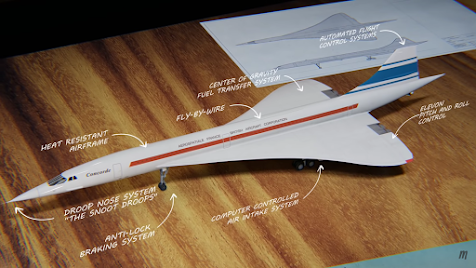At the beginning of Concorde's development stage, thousands of the brightest French and British engineers were put to work in making supersonic air travel a reality. Aside from the NASA Apollo Moon Landings, Concorde was the most technically ambitious project of the century.
Built by both the British Aircraft Corporation (BAC) and Sud Aviation France (Later as Aerospatiale), Concorde can fly and cruise at twice the speed of sound, with enough range to fly across the Atlantic. Although it would burn more fuel, Concorde will have to make two flights in the same time compared to a regular passenger jet making only one flight. Offsetting higher fuel costs by reducing the number of each Concorde needed for each route. And over 16 airlines placed orders for 74 Concordes, a number expected to grow at 200 in the 1970s. By 1965, Aerospatiale started building the French-made Concorde Prototype no.001 (F-WTSS) in Toulouse, France and simultaneously the BAC building the British-made Concorde prototype no.002 (G-BSST) in Filton, Bristol.
Concorde, and a number of features and technological innovations that it possess.
And standing before us, is Concorde. Representing a triumph of aircraft engineering. Its ogival delta wing design took over 5000 hours to perfect. An ingenious shape that allowed it to fly beyond Mach 2, but slow enough to fly into existing airports at subsonic speeds. And features highly-advanced afterburning turbojet engines that were sourced from the BAE TSR-2 Cold War strike and reconnaissance aircraft, redesigned and designated as the Bristol (Later Rolls Royce) Olympus 593 Mk.610 Turbojet Engine. It was also re-engineered with an innovative air intake control system that allowed something that is called "Supercruise" at Mach 2 and for longer than any aircraft in history. Cruising at Supersonic Speeds without the usage of afterburners to save fuel consumption.
An anatomy of how Concorde looks like with the Drooping Nose Cone system.
With a streamlined airframe, Concorde's sleek nose would've obscured the pilots' view. The solution, was a "drooping nose cone" that can be lowered to provide better visibility during takeoff and landing, sometimes this system was often referred by aviation enthusiasts as the "Droop Snoot". And this short video explains it:
The sheer amounts of innovations was astounding And by 1967...Concorde was ready to be unveiled to the public.
The Anglo-French made Concorde prototype no.001 being unveiled in 1967.




Comments
Post a Comment